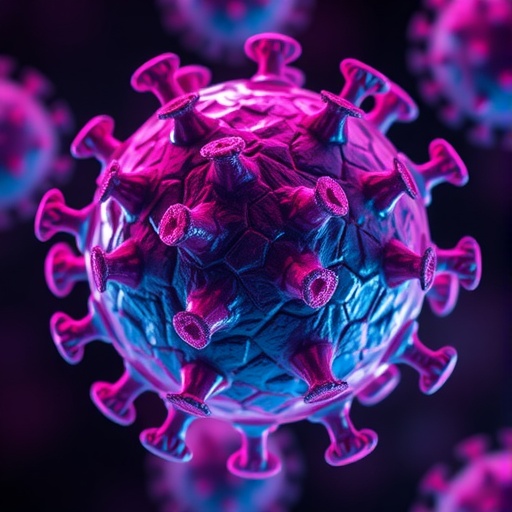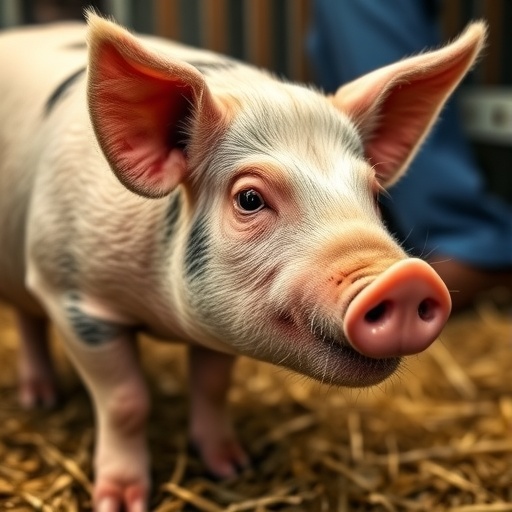In the rapidly evolving field of single-cell biology, the ability to distill complex cellular data into meaningful and interpretable representations is paramount. These representations, or embeddings, transform high-dimensional single-cell profiles into low-dimensional spaces, facilitating visualization, clustering, and downstream biological analyses. However, as the wealth of single-cell data grows exponentially, the rigor with which these embeddings are evaluated has lagged, casting uncertainty on their reliability and biological interpretability. A groundbreaking study by Wang, Leskovec, and Regev, forthcoming in Nature Biotechnology, confronts this challenge head-on by unveiling critical gaps in current cell embedding evaluation metrics and proposing innovative solutions to overcome them.
Single-cell profiling technologies such as single-cell RNA sequencing (scRNA-seq) have revolutionized our understanding of cellular diversity and function. Yet, the sheer complexity of these data sets, characterized by thousands of genes and millions of cells, demands computational techniques that compress this information without sacrificing biological fidelity. Embedding methods serve this role by mapping cells into computational spaces where similarities and differences correspond to meaningful biological relationships. Popular algorithms like t-SNE, UMAP, and various neural network-based approaches have gained traction due to their ability to uncover latent structures within the data. Nonetheless, a pressing question remains: how well do these embeddings preserve true biological signals?
The new study introduces Islander, a surprisingly simple three-layer perceptron model trained specifically to optimize existing embedding evaluation metrics. Astonishingly, Islander outperforms all contemporary embedding methods across a diverse suite of benchmark cell atlases, indicating a potential overfitting to these metrics rather than true biological preservation. This discovery raises a fundamental dilemma in computational biology—high scores on existing metrics do not necessarily translate to biologically meaningful embeddings.
.adsslot_nkH6b7EVQt{ width:728px !important; height:90px !important; }
@media (max-width:1199px) { .adsslot_nkH6b7EVQt{ width:468px !important; height:60px !important; } }
@media (max-width:767px) { .adsslot_nkH6b7EVQt{ width:320px !important; height:50px !important; } }
ADVERTISEMENT
Islander’s architectural simplicity belies its profound implications. By effectively “gaming” the evaluation criteria, Islander reveals that prevailing metrics fail to adequately penalize distortions in biological structures. In essence, these metrics prioritize quantitative similarity over qualitative biological plausibility. This discrepancy highlights a critical blind spot: embeddings might appear optimal according to numerical benchmarks while masking or distorting essential biological relationships among cells.
Such distortions have tangible consequences for biological discovery. Researchers relying on embeddings to infer cellular lineages, identify rare populations, or interpret spatial organization may be misled by artifacts introduced through embedding inaccuracies. The study underscores that relying solely on conventional evaluation frameworks could propagate errors downstream, potentially slowing progress in fields such as developmental biology, immunology, and cancer research where cellular heterogeneity is crucial.
To address this, Wang and colleagues propose a novel evaluation metric dubbed scGraph, designed explicitly to detect and flag biologically implausible distortions in embeddings. Unlike previous metrics focusing on global statistical properties, scGraph incorporates graph-based representations of cellular neighborhoods, capturing local biological context and relationships. This approach allows for a nuanced assessment of whether embeddings maintain meaningful connectivity patterns reflective of underlying biological processes.
The core innovation of scGraph lies in its sensitivity to subtle shifts in cellular neighborhoods that are biologically relevant but easily overlooked by traditional metrics. By leveraging graph theory and machine learning, scGraph quantifies how robustly an embedding preserves the topology of cell-cell interactions intrinsic to the original data. Consequently, it offers a more rigorous checkpoint against embeddings that might score well numerically yet fail to honor biological integrity.
Beyond benchmarking, the study also shines light on the intricate balance between model complexity and biological fidelity. While sophisticated deep learning models have been proposed to handle the nuances of single-cell data, Islander’s efficacy on conventional metrics illustrates the risk of over-optimization detached from biological reality. This calls for the community to critically reevaluate how success is measured and to prioritize interpretability alongside performance.
Wang et al.’s work exemplifies an emerging trend in computational biology—integrating domain expertise with rigorous methodological innovation to address foundational challenges. By bridging the gap between mathematical rigor and biological relevance, their contributions help set new standards for evaluating and developing embedding methods critical to unraveling cellular complexity.
Furthermore, the study’s use of diverse cell atlases underscores the importance of generalizability in evaluation frameworks. By demonstrating Islander’s performance across multiple datasets and showing the limitations of existing metrics in varied biological contexts, the authors emphasize that evaluation tools must be robust to differing cellular architectures, technological platforms, and biological nuances.
The concept of “drifting islands” used in the study poetically encapsulates the notion of cellular groups that should remain coherent in embeddings but may inaccurately “drift” apart under suboptimal representations. Capturing such phenomena requires evaluation metrics attuned not just to global structure but to local biological continuity, a feature elegantly operationalized in scGraph.
This research also invites a broader reflection on the role of metrics in scientific progress. Metrics serve as guiding stars for algorithm development but must themselves evolve to prevent misleading optimization. The identification of metric inadequacies as a core issue encourages ongoing dialogue on constructing evaluation standards that are transparent, interpretable, and biologically grounded.
As single-cell technologies continue to generate increasingly intricate datasets encompassing multiple modalities—transcriptomics, epigenomics, proteomics—the need for embedding methods and evaluation metrics that faithfully capture multi-dimensional biology will become even more pressing. The framework introduced by Wang and colleagues offers a critical foundation for tackling such complexity, advocating for embedding assessments that holistically reflect biological truth.
Looking forward, the adoption of scGraph could catalyze innovation in computational approaches, driving the design of embedding algorithms that not only achieve commendable metric scores but also withstand biological scrutiny. Ultimately, this alignment between computational rigor and biological fidelity will be essential for translating single-cell insights into meaningful biomedical advances.
In sum, this seminal study lays bare the limitations of current embedding metrics, introduces a powerful new metric to rectify these deficiencies, and challenges the field to elevate standards of evaluation. By revealing that superior numerical performance may coincide with biological distortion, it compels a reevaluation of how we measure success in single-cell data representation—a lesson with implications extending far beyond biology to any domain relying on complex data embeddings.
Wang, Leskovec, and Regev’s work represents a vital step toward embedding evaluations that truly mirror biological complexity, ensuring that the computational tools designed to illuminate the cell’s secrets do so with fidelity and precision. Their insights will resonate deeply with computational biologists, data scientists, and experimentalists alike, charting a path toward more trustworthy, interpretable, and biologically meaningful single-cell analyses.
Subject of Research: Single-cell data embedding evaluation and benchmarking
Article Title: Limitations of cell embedding metrics assessed using drifting islands
Article References:
Wang, H., Leskovec, J. & Regev, A. Limitations of cell embedding metrics assessed using drifting islands.
Nat Biotechnol (2025). https://doi.org/10.1038/s41587-025-02702-z
Image Credits: AI Generated
Tags: biological interpretability in cell embeddingscell embedding evaluation metricsclustering methods in single-cell analysiscomputational techniques for cellular datagaps in current embedding methodologiesinnovative solutions in single-cell biologylatent structures in cellular datasetslimitations of single-cell data analysismapping cellular profiles to low-dimensional spacesrigor in cell embedding assessmentssingle-cell RNA sequencing challengesvisualizing high-dimensional single-cell data





